Chinese Dynasty: Qing Dynasty's Rise to Height of Prosperity
The Qing Dynasty (清朝, Qīng), also known as the Manchu Dynasty, was the last imperial dynasty of China, ruling from 1644 to 1912, overseeing a period of social, cultural, and political transformation that still shapes contemporary China. Its span of 268 years was a period of unprecedented territorial expansion and marked the zenith of classical Chinese civilization before the seismic impact of Western imperialism.
Establishment of the Qing Dynasty
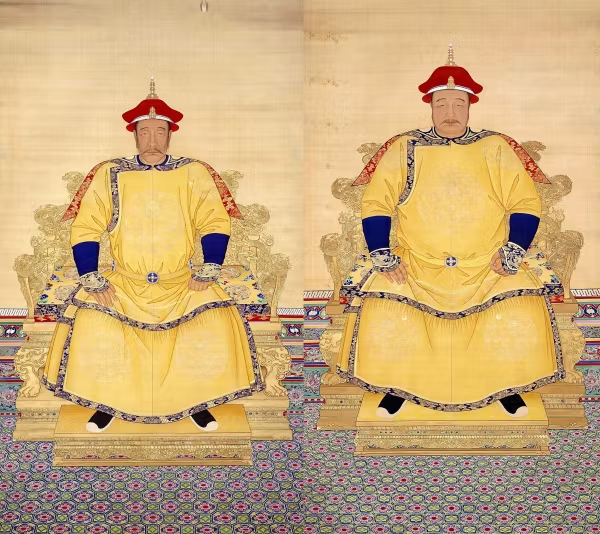
Portraits of Nurhaci (left) and Hong Taiji (right)
The Qing Dynasty originated from the Jurchens (女真), who were semi-nomadic people in Manchuria, present northeast China. They grew into a formidable organizing power under Nurhaci (努尔哈赤), who unified the Jurchen tribes and declared himself the Khan in 1616, establishing the Later Jin Dynasty (后金, 1616-1636).
In 1626, Nurhaci's eighth son, Huang Taiji (皇太极), ascended to the throne. In 1636, Huang Taiji renamed the state from "Great Jin" (大金) to "Great Qing" (大清) while elevating his position from Khan to Emperor in 1636, showing ambitions beyond unifying the Manchu territories.
The Ming Dynasty (明朝), China's ruling power at the time, was in decline, burdened by internal corruption, economic crisis, and frequent peasant revolts. It was also increasingly pressured by the Manchus from the north. By the early 1640s, Ming China was in turmoil. Catastrophic floods on the Yellow River, followed by widespread famine, led many to believe that the Ming rulers had lost the Mandate of Heaven. This perception fueled the desire for a new dynasty.
In 1644, the peasant rebel leader Li Zicheng (李自成) captured Beijing, marking the end of Ming rule. The Ming general Wu Sangui (吴三桂) allied with the Manchus and opened the Shanhai Pass (山海关). The Manchu-led Eight Banner armies (八旗军) swiftly defeated Li Zicheng's Shun Dynasty (大顺). They took Beijing and established the Qing's rule of China.
Period of Consolidation
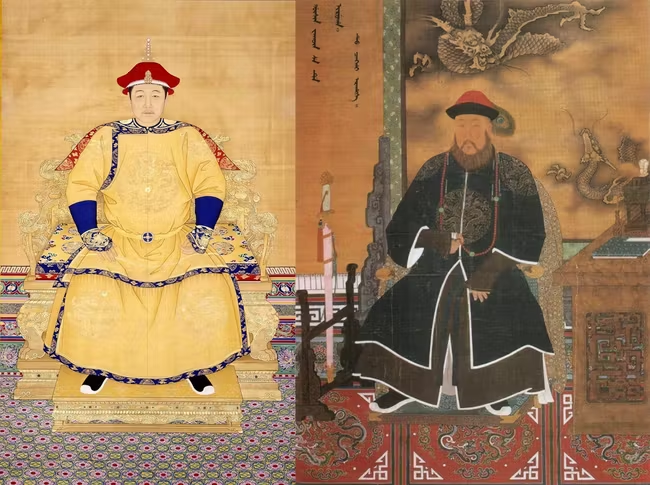
Portraits of the Shunzhi Emperor (left) and Dorgon (right)
In 1643, after Huang Taiji's death, his six-year-old son became the Shunzhi Emperor (顺治帝), with his uncle Dorgon (多尔衮) as regent. In 1644, Dorgon persuaded Shunzhi to move the capital to Beijing. Shunzhi performed a ceremony at the Temple of Heaven (天坛) and then proclaimed himself emperor again in Beijing, signaling Qing's transformation into a dynasty ruling all of China.
In the mid-17th century, the Qing Dynasty consolidated its rule over China by defeating various rebellions and resistances, including Li Zicheng's Shun Dynasty, multiple Southern Ming (南明) regimes by remnants of the Ming loyalists, and Zhang Xianzhong's (张献忠) Xi Dynasty (大西). But they also faced significant resistance, particularly in South China, where anti-Qing forces led by figures like Li Dingguo (李定国) and Liu Wenxiu (刘文秀) launched attacks. To counter this, the Qing appointed former Ming generals Wu Sangui, Geng Zhongming (耿仲明), and Shang Kexi (尚可喜) as kings to oversee regions in the south, known as the Three Feudatories (三藩).
In 1662, the Yongli Emperor (永历帝) of the last Southern Ming regime was killed, marking a complete downfall of the former Ming. After stabilizing Qing's rule, in 1650, Dorgon passed away, and the Shunzhi Emperor took full control. To strengthen imperial authority, Shunzhi abolished the old practice of princes and nobles managing regional affairs and implemented measures such as stopping land enclosures and easing laws on fugitives to alleviate ethnic tensions.
Height of Power and Prosperity
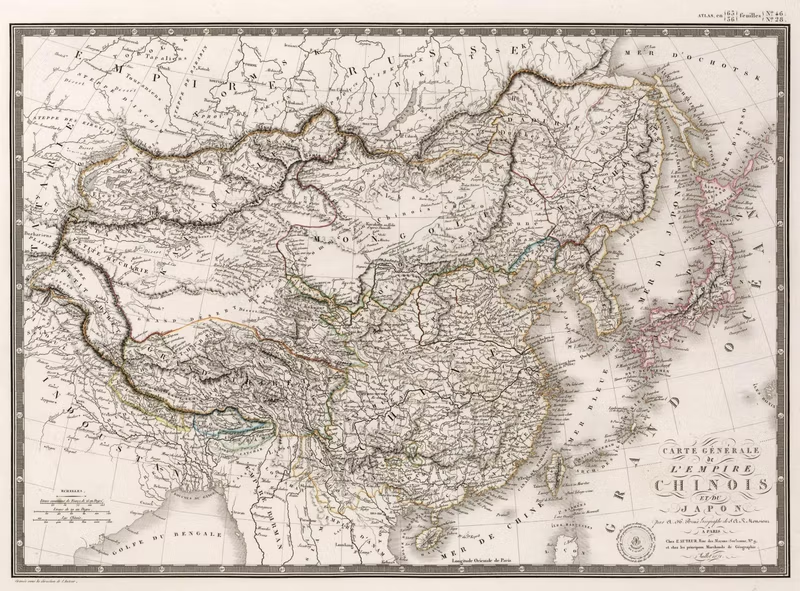
The largest territory of the Qing Empire (1790)
The reigns of the Kangxi (康熙, 1661-1722), Yongzheng (雍正, 1722-1735), and Qianlong (乾隆, 1735-1796) Emperors are often considered the dynasty's zenith, a period popularly known as the High Qing era (康雍乾盛世). During this time, through numerous military campaigns, the dynasty extended its rule to Taiwan (台湾), Tibet (西藏), Mongolia, and Xinjiang (新疆), thus shaping modern China's vast territorial boundaries.
Kangxi Emperor (1661-1722)
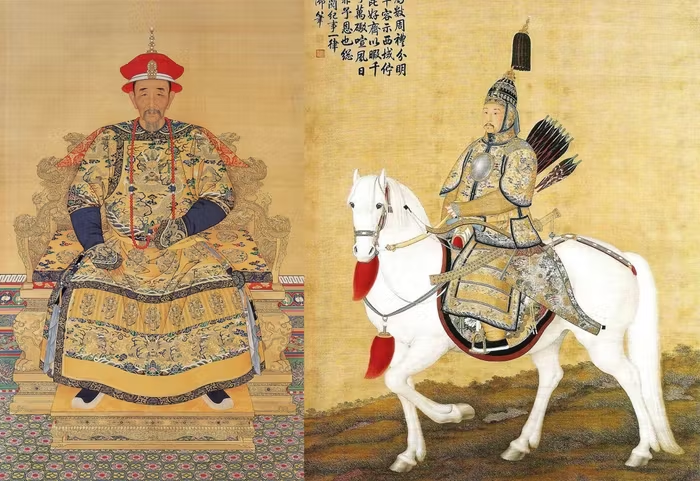
Portrait of the Kangxi Emperor in court dress (left) and the Kangxi Emperor in ceremonial armor on horseback (right)
In 1661, the Shunzhi Emperor died young and his 8-year-old son became the Kangxi Emperor (康熙帝). In the early years of Kangxi's reign, four Manchu ministers assisted in governance. In 1669, he eliminated the powerful minister, Oboi (鳌拜), and took personal charge of the government.
Due to the serious impact of the Three Feudatories on national unity, in 1673, the Kangxi Emperor abolished the feudal system. Wu Sangui rebelled against the Qing, followed by the other two feudatories, known as the Revolt of the Three Feudatories (三藩之乱). The revolt was eventually defeated in 1681.
After quelling the rebellion, Kangxi was considering incorporating Taiwan into the empire. In 1683, he assigned Shi Lang (施琅) as the commander of the Fujian (福建) navy. Shi Lang defeated the Zheng family navy in the Penghu Islands (澎湖) and then accepted the surrender of Ming loyalists in Taiwan. By 1684, the Qing government established administrative divisions in Taiwan, integrating it under mainland rule.
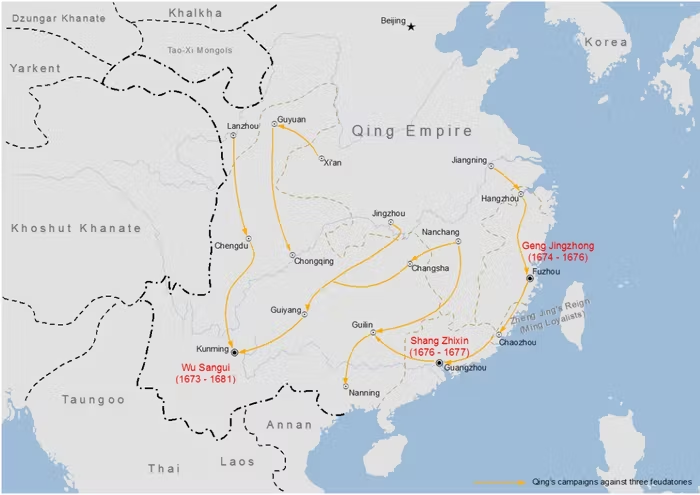
Map showing the Revolt of the Three Feudatories
At this point, the Qing Dynasty was entering its peak. Kangxi pursued benevolent rule, lightening the people's burdens. After assuming full control, he stopped land enclosures and extended tax exemptions for new farmland. He reformed governance, reinstating the examination system. His policies and new crops introduced from the Americas led to a population boom. He appointed capable officials for waterway management and personally surveyed local customs and projects on southern tours.
After mid-reign, the handicraft industry recovered. To maintain order, he issued sixteen edicts, instructing officials to educate the public. He sent agents to investigate local affairs, laying the groundwork for Palace Memorials (密折制度), which was a secret reporting system that local officials could send direct reports to the emperor without passing through bureaucratic filters. He also sought to win over the Han Chinese by unifying governance with Confucian ideology, particularly the Cheng-Zhu school of Neo-Confucianism (程朱理学). He held Imperial Examinations for ethnic Han to become officials and promoted the study of Western science and culture by missionaries.
During the early Qing period, Mongolia was split into four sectors. The Dzungar Khanate (准噶尔汗国), having cordial ties with the Tsardom of Russia, saw its Khan, Galdan (噶尔丹), suppress the Yarkent (叶尔羌) and Khoshut (和硕特) Khanates, and then take over the Khalkha Mongols (喀尔喀蒙古) who sought Qing's protection. Kangxi dispatched Sabsu (萨布素) to oust Russian forces in the Yakesa Campaign (雅克萨战役). In 1689, the Treaty of Nerchinsk (《尼布楚条约》) was signed with Russia, establishing the northeastern border and Russia's neutrality.
Between 1690 and 1697, the Battle of Ulan Butung (乌兰布通之战) took place between the Qing and the Dzungar Khanate. Following three expeditions against Galdan resulting in his death, the Qing established direct rule over the Khalkha Mongols.
The Khoshut Khanate, in the Qinghai-Tibet Plateau, assisted the 5th Dalai Lama of the Gelug school in overcoming the Nyingma school and unifying Tibet before splitting into Qinghai (青海) and Tibet Khoshuts. During the 6th Dalai Lama's reign, Desi Sangye Gyatso (桑结嘉错) oversaw Tibet's political affairs, and allied with the Dzungars, but was murdered by Lha-bzang Khan (拉藏汗). In 1717, Tsewang Rabtan (策妄阿拉布坦) invaded Tibet and occupied Lhasa (拉萨). After initial defeats, the Qing drove out the Dzungars in 1720, installing the 7th Dalai Lama and managing Tibet using Lha-bzang Khan's ex-officials.
Yongzheng Emperor (1722-1735)
In 1722, following Kangxi's death, the Yongzheng Emperor (雍正帝) rose to power. In Kangxi's later years, lax governance and widespread corruption became prevalent. Yongzheng admonished officials at all levels that failure to reform would result in severe punishment. To strengthen the monarch's absolute power, he improved the Palace Memorials system, allowing only officials granted by the emperor to submit them. In 1729, due to northwest military operations against the Dzungar Khanate, Yongzheng created the Junji Fang (军机房) in the palace, acting as the emperor's direct reporting cabinet, and skilled officials were selected to handle urgent military affairs and assist in governance. It later evolved into the Grand Council (or Junji Chu, 军机处), marking the peak centralization of imperial power and a significant shift in Qing's central institutions.
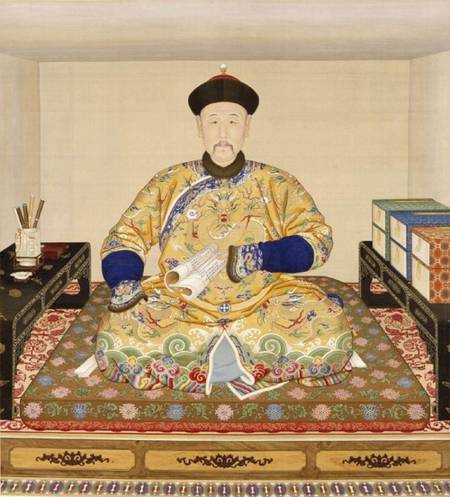
Portrait of the Yongzheng Emperor
Yongzheng continued the Qing's expansion policy. In 1723, Tsewang Rabtan supported the Khoshut tribe leader in Qinghai to rebel against the Qing with 200,000 people. Yongzheng sent Nian Gengyao (年羹尧) and Yue Zhongqi (岳钟琪) to resist the rebellion, leading to a decisive victory and full Qinghai control. This allowed the Qing to acquire parts of Xikang (西康) and establish ministers to govern the Qinghai-Tibet region from Xining (西宁) and Lhasa. The Khalkha Mongols were also integrated into the Qing Dynasty.
In 1727, the Qing signed the Treaty of Kyakhta (《恰克图条约》) with Russia, establishing the Sino-Russian border in the middle section. In 1729, Yongzheng sent Furdan (傅尔丹) and Yue Zhongqi to confront Dzungar Khan Galdan Tseren (噶尔丹策零) at Khovd (科布多), but they were defeated at Khoton Lake (和通泊). In 1732, Galdan Tseren invaded the Khalkha Mongols from the east but was defeated by the Khalkha prince at the Khangai Mountains (杭爱山). In 1734, a peace treaty was signed, roughly establishing the Altai Mountains (阿尔泰山) as the border, bringing peace to the northwest.
To alleviate class conflicts and boost agricultural output, Yongzheng introduced a unified tax system in 1723, merging field and poll taxes. This replaced the previous dual standard based on population and land area, easing the burden on landless and small-land farmers. By the Qianlong Emperor's reign, this policy was implemented nationwide, resulting in significant population growth.
Yongzheng also abolished the "inferior status" (贱籍) and issued the first decree of "opening up and rectifying" in 1723. Chinese society was divided into different estates: officials, aristocracy, literati, ordinary commoners, and people with inferior status. Commoners were divided into "good" or free commoners (良民), and those with inferior status (贱民), who were considered debased and servile. Debased people, such as slaves, entertainers (including prostitutes and actors), and criminals, were legally inferior and faced unequal treatment. Starting with Yongzheng, the Qing government tried to reduce these distinctions. He ordered the rectification of the status of "entertainer households" and instructed provinces to allow similar "debased people" to rectify their status if found.
Additionally, in the southern minority areas, Yongzheng abolished the chieftain system, establishing term-limited, non-hereditary officials to manage prefectures, departments, and counties, similar to the mainland. These policies aimed to eliminate hereditary privileges, reduce burdens and disasters for southwestern minorities, and promote their social, economic, and cultural development.
Qianlong Emperor (1725-1796)
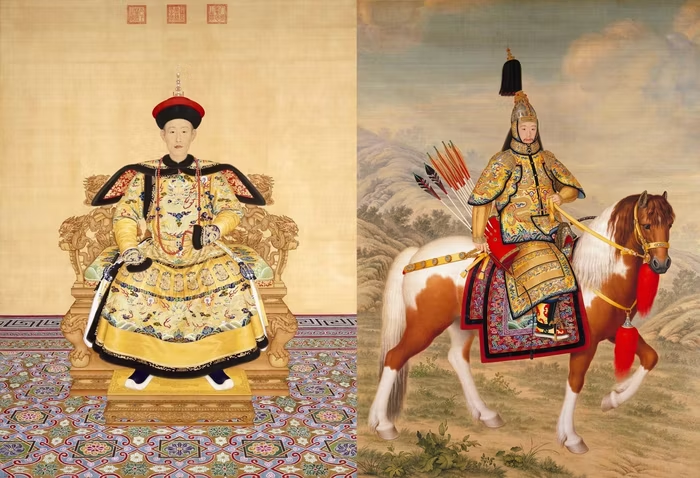
Portrait of the Qianlong Emperor in court dress (left) and the Qianlong Emperor in ceremonial armor on horseback (right)
Yongzheng Emperor passed away in 1735, and his fourth son succeeded him as the Qianlong Emperor (乾隆帝). Throughout his reign, Qianlong made significant contributions to civil governance and military achievements, consolidating China as a unified multiethnic state and bringing the Qing Dynasty to its height of prosperity.
Qianlong launched a sequence of military expeditions known as the Ten Great Campaigns (十全武功). These campaigns aimed to expand Qing control in Inner Asia, including two against the Dzungars (准噶尔) in 1755 to 1757 (against Dawaqi and Amursana) and the pacification of Xinjiang from 1758 to 1759. The remaining seven campaigns served more as law enforcement operations within already established borders, including two wars against the Gyalrong of Jinchuan in Sichuan (大小金川) in 1747-1749 and 1771-1776, the suppression of Taiwan's Lin Shuangwen rebellion (林爽文事件) in 1786-1788, and four foreign expeditions including campaigns in Burma (or Myanmar) from 1765 to 1769, a campaign in Đại Việt (or Annam) from 1788 to 1789, and two campaigns against the Gurkhas (廓尔喀) at the Tibet-Nepal border from 1790 to 1792.
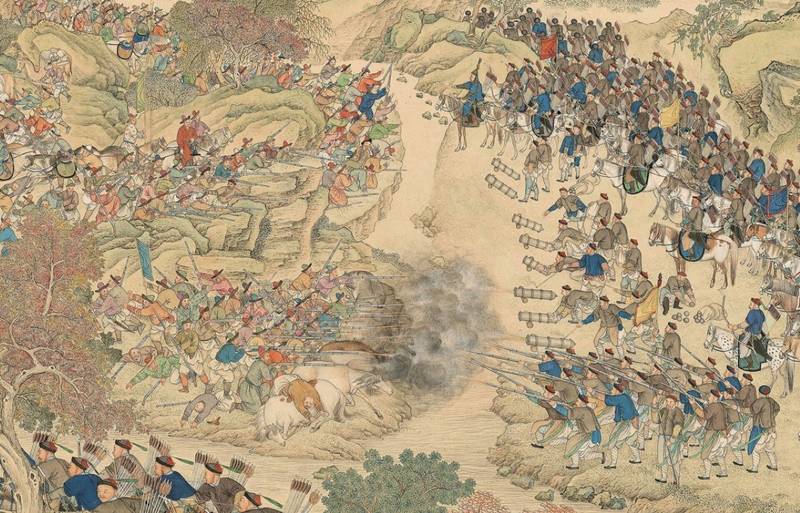
Khoja rebels and Qing soldiers fighting at the Battle of Yesil-kol-nor near Yashilkul Lake in 1759
Upon taking the throne, Qianlong stabilized his rule with the help of Zhang Tingyu (张廷玉) and Ortai (鄂尔泰), adopting a moderate governance approach balancing benevolence and strictness. The population grew steadily, exceeding 300 million by his later years, about a third of the world's population then. The silk and cotton industries in Jiangnan (江南) and Guangdong (广东) thrived, and Jingdezhen's (景德镇) porcelain reached its zenith. Meanwhile, silver shops emerged in Shanxi (山西), and the treasury's silver reserves more than doubled from 1735 to 1774.
Emperor Qianlong was a great patron of academia, and the period oversaw a period of prolific publishing, including historical works and famous novels like Dream of the Red Chamber (《红楼梦》), Strange Tales from a Chinese Studio (《聊斋志异》), and The Scholars (《儒林外史》). In 1773, Qianlong ordered the compilation of the Complete Library of the Four Treasuries (or Siku Quanshu,《四库全书》), along with the Complete Classics Collection of Ancient China (《古今图书集成》) written during Kangxi and Yongzheng, they became the largest encyclopedic work in the world at that time, marking a cultural high point.
However, Qianlong's reign was marked by strict censorship, leading to the suppression of dissenting ideas and the execution or exile of intellectuals. Despite this, the Qing Dynasty made significant contributions to cultural development, with efforts to compile lost ancient texts. Some books with "anti-Manchu" content were also published legally. The intellectual and academic circles were active during this period, reflecting a relatively enlightened attitude.
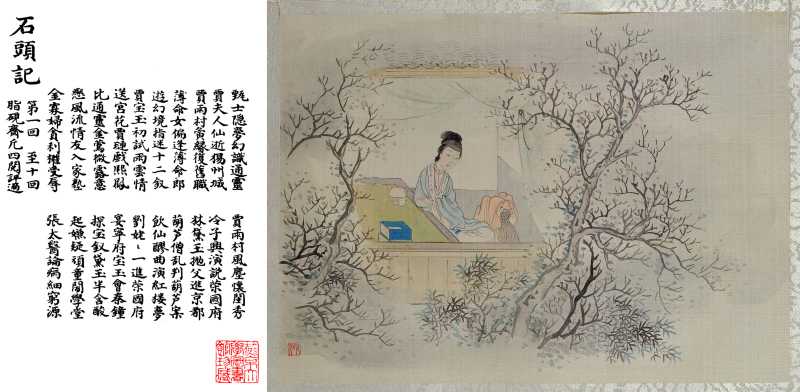
The "Gengchen manuscript" (1760) of Dream of the Red Chamber (left) and a scene from the novel by Fei Danxu (right)
During the 18th century, Western missionaries sparked a "Chinoiserie" (中国风) trend in Europe by introducing Chinese culture. Europeans revered Chinese culture, philosophy, and art. However, by the end of the 18th century, as the High Qing era was drawing to a close, negative assessments began to emerge among Europeans. Despite believing that the Qing was in decline, the British envoy George Macartney admired the efficiency of the Chinese government and its ability to overcome challenges.